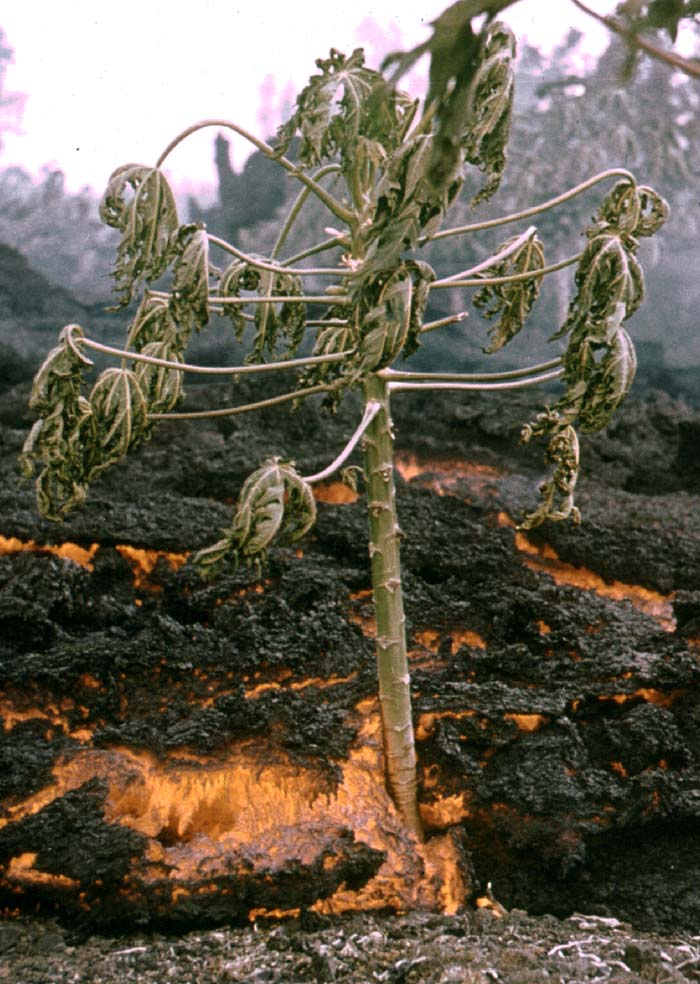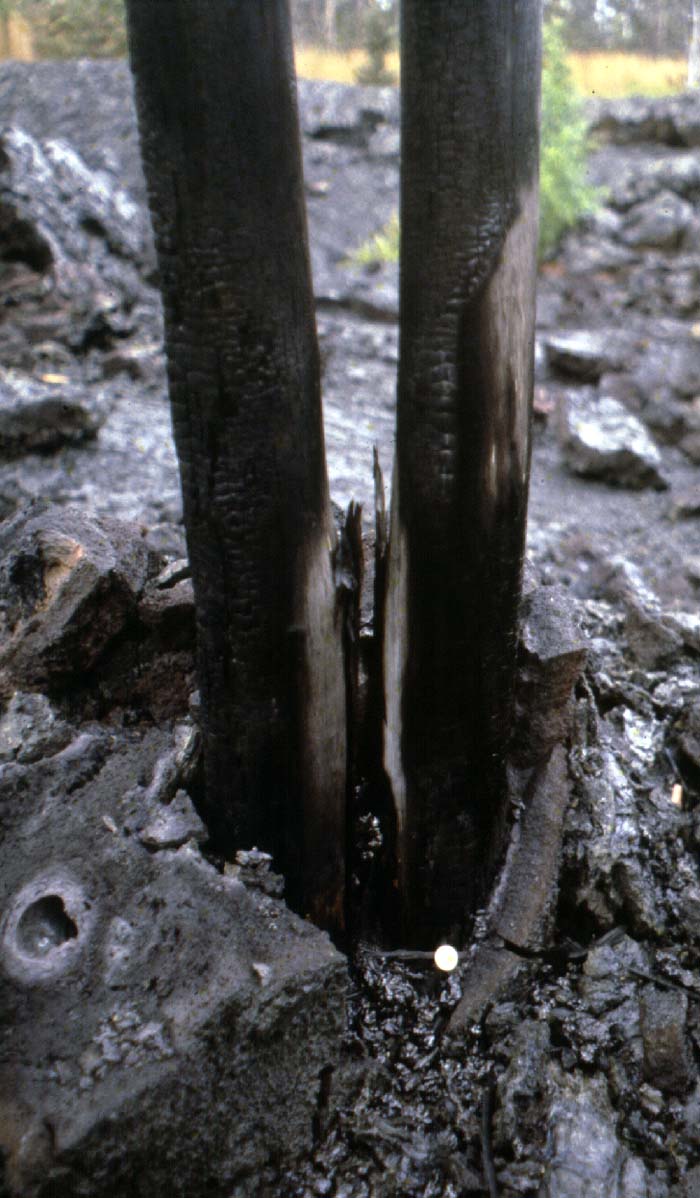The starting coordinates will put you in the parking area for the Lava Cast Forest. The Lava Cast Forest is a Recreation Fee Site and a parking pass is required. Area is usually accessible from mid-May to mid-November.
This is the first in a series of eight Earthcaches being developed at major points of interest in Newberry National Volcanic Monument in cooperation with the staff of the Deschutes National Forest. This EarthCache is located along a one mile paved trail. Along the trail are 9 interpretive signs which describe the area.
You will need a tape measure to gather the information to log this cache. To log this cache post a photo of your favorite feature along the trail and e-mail me the answers to the following questions:
- At N 43° 48.935’ W 121° 17.122’ there is a single elliptical shaped tree mold. What are the minimum and maximum diameters (in inches) of this mold?
- At N 43° 48.861’ W 121° 17.102’ there are three tree molds. What are the diameters (in inches) of these molds?
- At N 43° 48.782’ W 121° 17.202’ there is a horizontal tree mold. What is the length (in feet) of the mold?
While doing this earthcache you may also be able to collect the necessary information to claim several waymarks in the area.
This area was discovered by Walter Perry of the Forest Service in 1925. The former Lava Cast Forest Geological Area was established by the Forest Service in 1942 and is now a part of Newberry National Volcanic Monument. The name of the area is based on the many lava trees and tree molds in the area, but the name is incorrect because a mold is formed around an object whereas a cast fills a mold. So actually the name should be "Lava Mold Forest".
 Lava
Lava trees and tree molds are formed when lava enters a forested area. As fluid pahoehoe lava surrounds a living tree, a crust of solidified lava forms around the tree due to the moisture in the tree causing cooling of the lava surface. The tree typically burns out to leave a vertical, open tree mold. If the level of the flow drops, a collar of lava may project above the final surface to indicate the high stand of the flow. These collars of lava are referred to as lava trees. When the tree burns through at flow level, the upper part of the tree may fall into the lava and become coated with lava to form horizontal tree molds. Horizontal tree molds also form when trees are pushed over in the high velocity deeper rivers of lava and are held in place by their roots. Vertical tree molds typically only form where flow velocity is low.
trees and tree molds are formed when lava enters a forested area. As fluid pahoehoe lava surrounds a living tree, a crust of solidified lava forms around the tree due to the moisture in the tree causing cooling of the lava surface. The tree typically burns out to leave a vertical, open tree mold. If the level of the flow drops, a collar of lava may project above the final surface to indicate the high stand of the flow. These collars of lava are referred to as lava trees. When the tree burns through at flow level, the upper part of the tree may fall into the lava and become coated with lava to form horizontal tree molds. Horizontal tree molds also form when trees are pushed over in the high velocity deeper rivers of lava and are held in place by their roots. Vertical tree molds typically only form where flow velocity is low.
Carbon-14 age-dates for eruptions along the NW Rift Zone of Newberry Volcano range from 5800 to 6400 C-14 years.
Carbon-14 age-dates must be corrected to give calendar or actual year age-dates. Primarily because the production of C-14 in the atmosphere by cosmic rays is not uniform through time, age-dates derived from C-14 must be calibrated with known dates. Conversion from C-14 to calendar years is now possible throughout the range of 0 to 11,390 calendar years ago based on tree ring chronologies and other methods allow corrections back to almost 22,000 calendar years. C-14 age-dates are always referenced to the year 1950 A.D. Calendar year age-dates are likewise referenced to 1950.
The corrected ages for eruptions along the NW Rift Zone range from 6600 to 7200 years.
Tree molds in the basalt flows of Newberry Volcano have been a frequent source of charcoal for C-14 dating. This source of charcoal is one reason for the 600-year spread in C-14 dates. To obtain the best possible date on a flow the charcoal should be from the outermost rings of a tree, but in a large three to four-foot-diameter tree mold the remaining charcoal could easily have come from the interior of a large pine that was 400 years old, therefore the resulting C-14 date could be 400 years to old.
The corrected age that is most often used for the NW Rift Zone eruptions is 7000 calendar years.